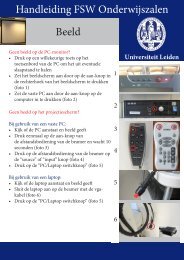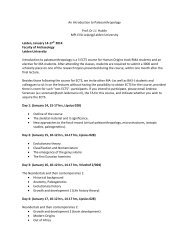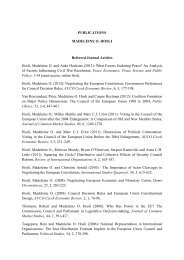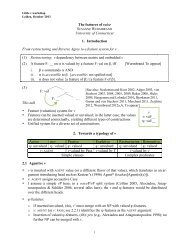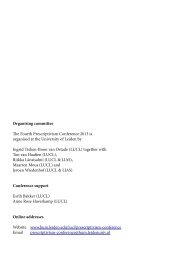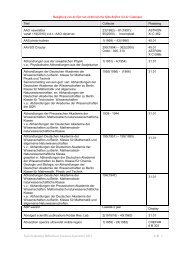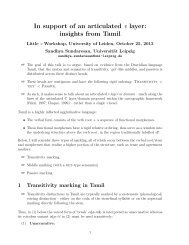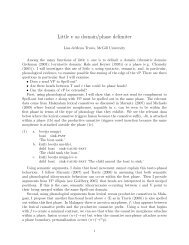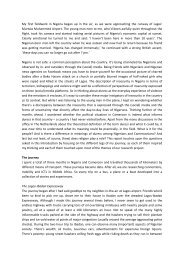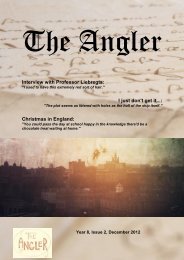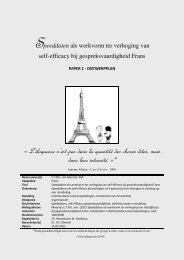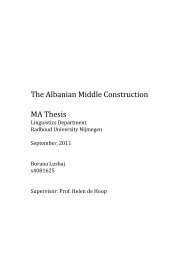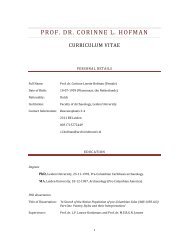Institute for History Annual Report 2010 - O - Universiteit Leiden
Institute for History Annual Report 2010 - O - Universiteit Leiden
Institute for History Annual Report 2010 - O - Universiteit Leiden
Create successful ePaper yourself
Turn your PDF publications into a flip-book with our unique Google optimized e-Paper software.
Hanno Wijsman<br />
Over the centuries, the Low Countries have been a<br />
key region in Europe <strong>for</strong> the developments of book<br />
production, art production, and commercialisation.<br />
This project intends to view these<br />
developments in a combined way, focussing on<br />
changes in illustrations in manuscripts and printed<br />
books in the 15th and 16th centuries.<br />
In <strong>for</strong>mer research, manuscripts and printed books<br />
have largely been studied as separate worlds, by<br />
medievalists on the one side and modernists on<br />
the other. Printing has often been seen as a<br />
‘revolution’ or even as the ‘invention of the book’.<br />
Only very recently one starts to see that it is more<br />
fruitful to stress the continuity of book production<br />
and to consider the introduction of printing as one<br />
technical step in book history, though a very<br />
important one. Books, whether hand written or<br />
printed, are important objects in the transmission<br />
of culture. The main novelty of printing is a<br />
commercial one: printers seek a new public to sell<br />
books they now make in several dozens or even<br />
hundreds of copies, instead of individually in<br />
commission. It has been often stated that books get<br />
more numerous and cheaper, but many questions<br />
remain on how exactly the printers tried and<br />
managed to reach new target groups in society.<br />
This interdisciplinary project intends to venture<br />
into the field where the history of art and history<br />
of the book meet with social and economic history.<br />
The production of books and other works of art is<br />
closely linked to the important position of<br />
commerce. The major commercial cities in<br />
Northern Europe were Bruges (13th-15th cen-<br />
<strong>Institute</strong> <strong>for</strong> <strong>History</strong><br />
52<br />
turies) and Antwerp (16th century). In the same<br />
period the production of books and art flourished<br />
as never be<strong>for</strong>e. The trading network and the<br />
presence of many <strong>for</strong>eign agents led to the exportation<br />
of these luxury products all over Europe,<br />
especially to England, the Iberian Peninsula and<br />
Italy. The economic shift from Bruges to Antwerp<br />
is reflected in book production, because Bruges<br />
was the major town <strong>for</strong> manuscript production in<br />
the 15th century Netherlands, but Antwerp<br />
became by far the <strong>for</strong>emost printing town in the<br />
16th century (although the first flourishing of<br />
printing (1470-1490) was in the North, in cities like<br />
Gouda and Haarlem).<br />
Our project wants to examine how market strategies<br />
of the book producers (aiming at socially and<br />
geographically ever growing markets), technical<br />
innovations, the culturally conditioned demand of<br />
book possessors, and changing contents of books<br />
are linked together. Our aim is to combine the<br />
history of taste and fashion at the side of the<br />
consumers with the history of technological and<br />
stylistic inventions of book production, especially<br />
concerning the illustrations, focussing on <strong>for</strong>m and<br />
content of the books, social stratification of the<br />
buyers and strategies of the printers. Thus we<br />
want to innovate in a field where a lot of research<br />
has been done, but where different approaches are<br />
as yet not combined systematically and on a<br />
quantitatively representative basis. Our main<br />
source is constituted by the surviving books,<br />
manuscripts and printed books. It is our intention<br />
to study them first broadly, quantitatively, in<br />
order to see the long term developments and sec-



